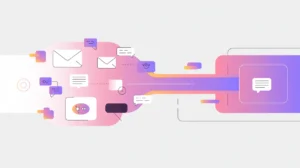Importance of Benchmarking and Leaderboards
Benchmarking and leaderboards are tools used to evaluate and compare the performance of AI models. Benchmarking refers to testing models against standardized datasets or tasks, while leaderboards publicly rank models based on their scores. Their importance today lies in how they shape the direction of AI research and deployment. By highlighting which models perform best, benchmarks and leaderboards influence investment, competition, and the public perception of progress.
For social innovation and international development, benchmarking and leaderboards matter because they determine what kinds of AI are considered “state of the art.” If benchmarks emphasize tasks that overlook the realities of the Global South, local languages, or underrepresented communities, the resulting leaderboards may incentivize progress in directions that do not serve those most in need. Expanding benchmarks to reflect diverse contexts is therefore crucial.
Definition and Key Features
Benchmarking in AI involves testing models against curated datasets that represent specific tasks, such as translation, summarization, or question answering. Popular benchmarks include GLUE, SuperGLUE, and ImageNet, each of which has helped standardize evaluation. Leaderboards publicly display the results, often ranking models by performance metrics like accuracy, F1 score, or perplexity.
They are not the same as model evaluation in practice, which tests systems in applied settings. Nor are they purely academic exercises, since benchmarks directly influence which models are adopted, deployed, and funded. Benchmarks provide a shared yardstick, but they are only as good as the data they contain. If the benchmark lacks diversity, models optimized for it may fail in broader applications.
How this Works in Practice
In practice, leaderboards create incentives for researchers and companies to improve performance on narrow tasks, sometimes at the expense of generalizability. A model that tops a leaderboard may perform well on the benchmark but poorly in real-world contexts with noisy, multilingual, or incomplete data. This phenomenon, known as “overfitting to the benchmark,” is a growing concern.
New approaches to benchmarking are emerging to address these limitations. Dynamic benchmarks update with new tasks, while multi-dimensional leaderboards evaluate not only accuracy but also fairness, efficiency, and energy consumption. These developments reflect a growing recognition that benchmarks must evolve to reflect both technical progress and social priorities.
Implications for Social Innovators
For mission-driven organizations, benchmarking and leaderboards influence which tools are chosen and trusted. Education programs need benchmarks that include low-resource languages if AI tutors are to serve diverse classrooms. Health systems require leaderboards that measure safety and interpretability, not just raw accuracy. Humanitarian agencies benefit from benchmarks that test robustness in unstable conditions, where data may be scarce or incomplete.
Expanding benchmarks to reflect global diversity ensures that leaderboards drive progress in directions that matter for equity, trust, and social good.







